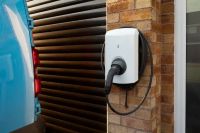


How to Charge an Electric Car at Home Without a Garage?
As electric vehicles (EVs) gain popularity, many prospective owners wonder how to charge their cars without a garage. While garages provide a protected space for charging, there are several effective solutions for those without one. This guide explores home charging options, different EV charger types, and practical ways to keep your EV powered.As a leading EV charger manufacturer in China, LiCB Charge offers reliable AC and DC electric vehicle charging stations along with comprehensive charging solutions.
Before exploring home charging solutions, it’s important to understand the three levels of EV charging:
Level 1 Charging: Uses a standard 120V household outlet. It’s the slowest method, providing about 4-5 miles of range per hour, suitable for minimal daily driving.
Level 2 Charging: Requires a 240V outlet, like those used for large appliances. It adds 25-30 miles of range per hour and is the most common home charging solution.
DC Fast Charging: Found in public stations, this provides up to 250 miles of range in an hour. It’s ideal for quick top-ups but isn’t typically used for home charging.
Even without a garage, home charging is feasible with the right setup. Here are some effective solutions:
Installing an outdoor Level 1 or Level 2 charger is a practical way to charge your EV at home. These chargers are weatherproof and can be mounted on an exterior wall or a dedicated post. Professional installation by a licensed electrician ensures safety and compliance with local regulations.
Use a weatherproof enclosure to protect your charger.
Keep the charging cable off the ground with a cable management system.
Install a cover or canopy for additional protection from rain and snow.
Public Level 2 and DC fast chargers are available in shopping centers, parking lots, and other public spaces. While convenient, relying on public charging exclusively can be expensive and may not always be available when needed.
Many employers now offer EV charging stations. If your workplace provides this option, it can be an efficient way to keep your vehicle charged during the day. If not, consider advocating for its installation.
A portable Level 1 or Level 2 charger allows you to charge your EV anywhere there’s an accessible outlet. This can be useful if you frequently park in different locations.
Schedule Charging During Off-Peak Hours – Many EV chargers allow scheduled charging to take advantage of lower electricity rates at night.
Use Fast Charging Sparingly – While fast chargers are convenient, frequent use can stress the battery over time.
Explore Incentives – Check for government or utility rebates to reduce installation costs for a home charger.
Charging an EV without a garage is entirely possible with the right approach. Whether through outdoor home charging, public stations, workplace charging, or portable solutions, there are plenty of ways to keep your EV powered. As EV infrastructure expands, charging will become even more accessible, making electric vehicle ownership easier than ever.Know more about Google SEO Directory
